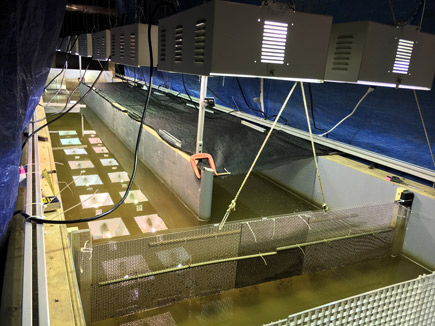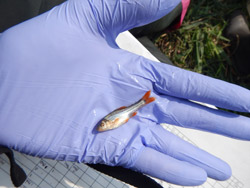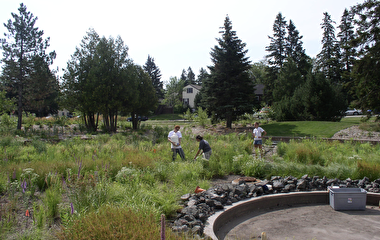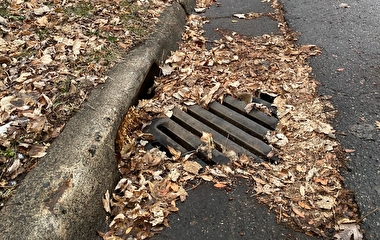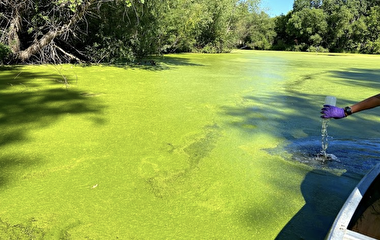experiments.
As culverts get longer to accommodate wider embankments, light levels within them are reduced—raising concerns that darkness may deter fish movement through a road-stream crossing. A new study by U of M researchers, however, was unable to demonstrate this effect with the endangered “Topeka Shiner.”
The need for this project first emerged in 2013, when MnDOT completed a culvert replacement project on U.S. Highway 75 over Poplar Creek. This southwestern Minnesota waterway serves as habitat to the federally endangered Topeka Shiner. Because the new culvert was significantly longer than the previous structure, the U.S. Fish and Wildlife Service required MnDOT to monitor the movement of the Topeka Shiner to ensure the new culvert did not inhibit fish passage.
“While previous studies identified ways that culverts can impede fish swimming, such as water depth and velocity, less obvious culvert attributes such as darkness had not been closely investigated,” says Jessica Kozarek, research associate at the U of M’s St. Anthony Falls Laboratory. “To ensure fish passage for the Poplar Creek installation and future culvert replacements, we saw the need to evaluate the impact of long culverts with low light levels on the movement of the Topeka Shiner and associated species.”
Scott Morgan, principal hydraulics engineer with MnDOT District 7 and the technical liaison for the MnDOT-funded study, says MnDOT has been extending culverts for safety reasons. “Wider embankments allow us to construct safe roadways without guardrail—and hitting guardrail is more hazardous for an errant vehicle than a driveable slope. Guardrail also conceals animals and catches snow.”
The study involved both a fish mark-and-recapture monitoring campaign and a set of laboratory experiments. In the field, researchers began by collecting light-level data in three long-box culverts. Next, they caught fish both upstream and downstream from culverts and control sections, marked them, and resampled them to see where the fish moved. They also determined whether the fish passed through culverts in similar numbers as through control sections of the same stream.
In the laboratory, researchers measured Topeka Shiner preference for light or dark channels using a 25-foot-long flume. Experiments allowed researchers to isolate the effect of light levels by running all experiments at the same depth and velocity. Fish could choose to swim along light or shaded lanes in this experiment.
Based on the field results, researchers concluded that light levels in large box culverts did not appear to deter movement of southwestern Minnesota fish communities. “The longest and darkest culvert did exhibit a difference in movement between the culvert and the control, but this variation could not be attributed to light levels alone. Fish—including Topeka Shiners—were able to pass through all three culverts,” Kozarek says.
This finding was supported by the laboratory experiments, she adds. Fish that could select either a shaded or lighted channel showed no avoidance of the shaded channel regardless of shading level.
“MnDOT expects that these findings—which showed no effect on the Topeka Shiner—will lower the cost and reduce the delay of box culvert replacement projects by eliminating the need for a fish passage study for each one,” Morgan says.
This is one of the first studies that has set out to evaluate fish behavior near dark culverts, Kozarek notes. More research is needed to quantify avoidance behaviors in darker culverts (smaller diameter) or for other species, especially in conjunction with other potential culvert barriers such as insufficient depth, excess velocity, or lack of appropriate habitat.
